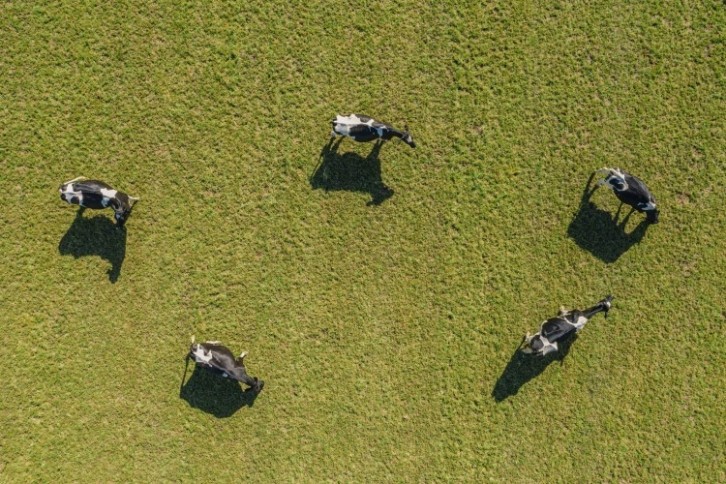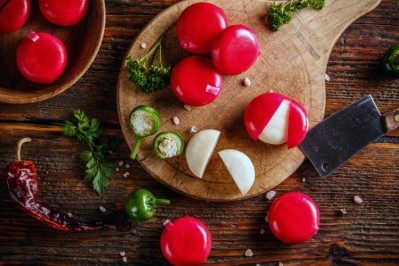How Mars is planning to green-up its dairy supply

Mars says dairy is the second largest contributor to the carbon footprint of its snacking business, with raw ingredients amounting to more than 70% of the firm’s total GHG emissions footprint.
With the majority of emissions from dairy typically occurring at farm level, the food major recently announced plans to support the implementation of various sustainability measures in partnership with key dairy suppliers.
FrieslandCampina in Europe, Fonterra in Tasmania, Land O’Lakes in the US and other global dairy producers have been engaged in the Moo’ving Dairy Forward program that aims to accelerate progress and ‘move’ the company closer to its 50% emissions reduction target for 2030.
For example, Dutch co-op FrieslandCampina, a Mars supplier for the past 30 years, is forming the Mars-FrieslandCampina Sustainable Dairy Development Program, which will dedicate a group of farms to Mars’ dairy supply and serve as a testbed for new environmental practices and technologies.
Embracing an opportunity
“Food processors are increasingly seeking to reduce greenhouse gas emissions throughout their supply chain, and are required by law to report on this annually. We see this as an opportunity,” corporate sustainability manager, Emma Halprin, told us. “Reducing emissions at farm level not only benefits member dairy farmers, but also our clients and the co-operative.”
She added that while an increasing number of the co-op’s clients are interested in working together to reduce GHG emissions, there’s also a growing interest in co-operating on other sustainability themes, such as regenerative agriculture and biodiversity.
For the Mars partnership, a pool of farmers will be formed that will apply ‘as many GHG emissions-reducing measures at their farms as possible’. This pool will be selected from the FrieslandCampina Development group, consisting of over 500 member dairy farmers in the Netherlands.
“The pool that will be formed represents the total greenhouse gas emissions of Mars’ portfolio and allocated mass balance only - so there is no special milk flow from these farms to the factory where these ingredients for Mars are being made,” Halprin explained.
Reductions in the following emissions are being targeted: carbon dioxide, methane and nitrous oxide.
What’s the mass balance approach?
The mass balance approach allows the net amount of raw materials – both sustainable and non-sustainable - to be tracked as they move through a supply chain and are allocated to goods. This way, a manufacturer can continuously increase the proportion of sustainable materials in the product mix.
Asked what specific measures FrieslandCampina dairies would implement in this partnership, Halprin said: “At the start, the focus is on Bovaer. In the coming years, other measures will be added, such as other feed additives, HVO diesel or fertiliser additives.
“Bovaer can be applied directly with immediate and proven results. It is easy to use and has no effect on animal health and no negative effect on milk production.”
The co-op will leverage the Annual Nutrient Cycle Assessment to track progress resulting from the sustainable farming practices on a yearly basis. “This extensive monitoring tool has been in place for years and is used by almost 10,000 FrieslandCampina member farms and provides detailed insight in for example the carbon footprint per farm and biodiversity KPIs,” the corporate sustainability manager added.
This isn’t the first time the co-op and Mars partner in a sustainability drive. There has already been a sustainability partnership in place between the two parties, which started in 2021.
This new agreement meanwhile had been in place since the beginning of this year and will run at least until 2025, with the aim to continue until 2030, we were told.
The other players
Fonterra, Land O’Lakes, DMK Group and Interfood are some of the other suppliers that stand to benefit for testing out sustainable farming practices.
In Tasmania, Fonterra will be supported by the confectionery giant in sourcing feed using its Seaforest seaweed food supplement – known as Asparagopsis.
With Land O’Lakes in the US, the company is funding manure management projects, including solid separators and manure lagoon covers – two techniques that Mars believe stand to significantly reduce manure storage emissions.
With the DMK Group, Mars has launched three pilot dairy farms, to study and aim to implement new science and technology with an ambition to create a pathway to net-zero dairy in a five-year project.
Across the program, Mars has set aside $47m to spend over 3 years. FrieslandCampina's Halprin told us that the food major will directly compensate its farmers to implement and test climate-smart practices, providing additional sustainability-related funding on top of the co-op's internal program.
How is Mars addressing its GHG emissions output?
Dairy is the second largest contributor to the carbon footprint of Mars’ Snacking business and raw ingredients account for over 70% of the organization’s total GHG emissions. Dairy is the second largest contributor to the carbon footprint of the company’s Snacking business.
Approximately 95% of Mars’ footprint falls within scope 3, i.e. indirect emissions that are not owned or controlled by the company, such as emissions from dairy production. This explains the company's impetus to invest in on-farm measures that could slim down its indirect emissions impact.
The confectionery and snacking major recently reported that it had reduced total emissions across its business by 16% from its 2015 baseline while growing the business by more than 60% in the same time period.
According to its 2023 Sustainability Impact report, Mars has reduced its scope 3 emissions by around 15% on the 2015 baseline, shaving off more than 5 million tons of CO2e. At the same time, scope 2 emissions have been more than halved, and scope 1 have been reduced by around 200,000 tons.








